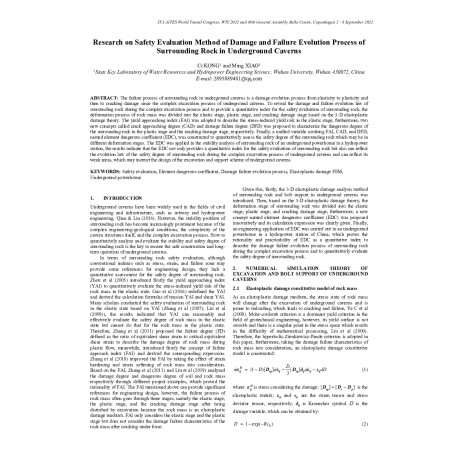Cart
0
0
No document
0,00 €
Total
Document successfully added to your shopping cart
Quantity
Total
There are 0 items in your cart.
There is 1 item in your cart.
Total documents
Total shipping
To be determined
Total
Search & filter
Search for a publication
Search & filter

Research on Safety Evaluation Method of Damage and Failure Evolution Process
Research_on_Safety_Evaluation_Me
The failure process of surrounding rock in underground caverns is a damage evolution process from elasticity to plasticity and then to cracking damage since the complex excavation process of underground caverns. To reveal the damage and failure evolution law of surrounding rock during the complex excavation process and to provide a quantitative index for the safety evaluation of surrounding rock, the deformation process of rock mass was divided into the elastic stage, plastic stage, and cracking damage stage based on the 3-D elastoplastic damage theory. The yield approaching index (FAI) was adopted to describe the stress-induced yield risk in the elastic stage, furthermore, two new concepts called crack approaching degree (CAD) and damage failure degree (DFD) was proposed to characterize the dangerous degree of the surrounding rock in the plastic stage and the cracking damage stage, respectively. Finally, a unified variable combing FAI, CAD, and DFD, named element dangerous coefficient (EDC), was constructed to quantitatively assess the safety degree of the surrounding rock which may be in different deformation stages. The EDC was applied in the stability analysis of surrounding rock of an underground powerhouse in a hydropower station, the results indicate that the EDC not only provides a quantitative index for the safety evaluation of surrounding rock but also can reflect the evolution law of the safety degree of surrounding rock during the complex excavation process of underground caverns and can reflect its weak areas, which may instruct the design of the excavation and support scheme of underground caverns.


